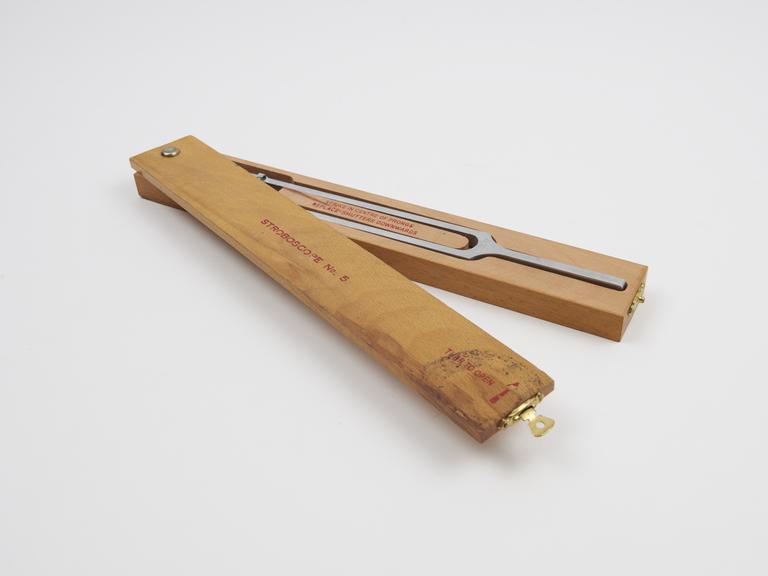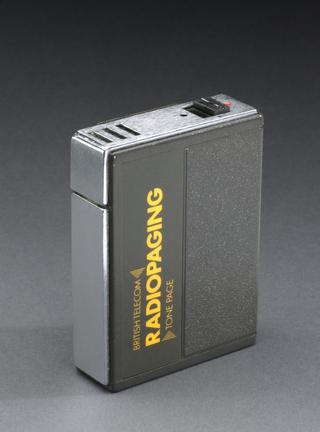
Stroboscope no. 5 (125 hertz) in wooden box
- Made:
- England

Stroboscope no. 5 (125 hertz) in wooden box.
When the two prongs are at rest, the overlapping slits are perfectly aligned so that light may pass through both. If the fork is then caused to vibrate, it is possible to see through the slits twice in each complete period, that is, 2n times per second, where n is the frequency. Hence the stroboscope is used in many instances to accurately determine frequency as an object vibrating or rotating at the same frequency will appear stationary when viewed through the slits.
The stroboscope is essentially a more complicated variation of the tuning fork and was used to adjust the speed and hence the data rate (baudrate) of a teletypewriter and so was often supplied with the machine.
Different stroboscopes were resonant at different fixed frequencies including 125 Hertz (Science Museum Group object no 2004-190), 140 Hertz (Science Museum Group object no 2004-191), and 150 Hertz (Science Museum Group object no 2004-192). These three stroboscopes may have been used by the General Post Office (GPO). 125 Hertz was a frequency commonly used by Siemens and RFT teletypewriters and 140 Hertz was a frequency commonly used by Creed teletypewriters. Many of the stroboscopes used in the UK were made by Ragg of Sheffield.




